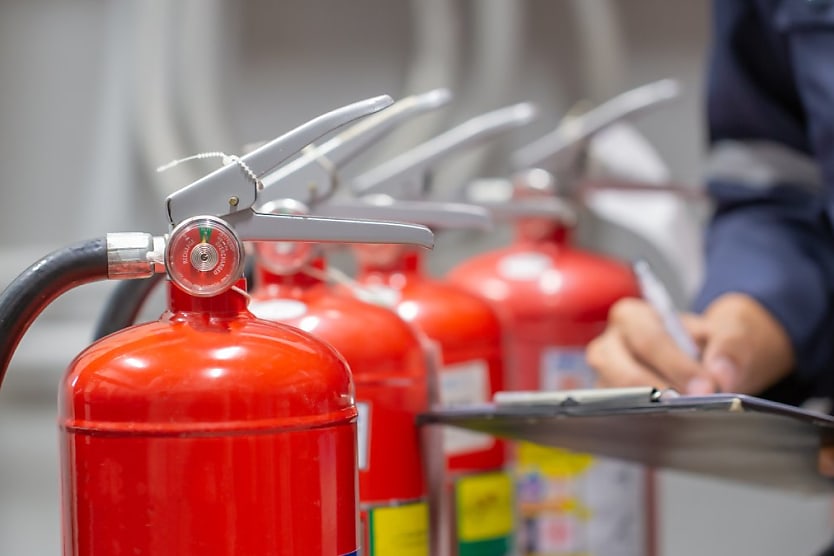Prioritising fire safety to cultivate a more secure and resilient workplace
SHARE THIS ARTICLE

Workplace fires are more common than you think. In 2019, Australia saw a total of 5,059 claims for fire damage to commercial properties, causing an estimated $469 million in losses.
In my role, I’ve unfortunately seen how preventable fires have impacted people in both their homes and the workplace. It’s not just the immediate, visible devastation that strikes you; it’s the charred remains of what was once a thriving business. The ripple effect extends far beyond the physical damage. The aftermath leaves businesses with significant financial and operational disruptions, problems that, for many organisations, are insurmountable to overcome.
Moreover, a fire in a supposedly safe environment, such as a workplace, can harm employees in both a physical and psychological nature, yet, through proactive measures, workplaces can significantly reduce the risk of a workplace fire incident and create a workforce capable of handling the situation.
From the research, we found that structural fires in Australian offices jumped by 12 per cent from 2018 to 2019. This is a vital piece of information that should prompt us all, especially HR managers and business leaders, to take action. Importantly, fire safety is more than just a tick-box exercise for regulatory compliance; it’s about taking care of what matters and safeguarding your most important asset, your employees.
Staggeringly, around half of workplace employees didn’t know what action to take or where to evacuate in the case of an emergency. The absence of such knowledge can be detrimental in emergency situations, leading to panic, injury, and even loss of life. This puts enormous emphasis on the need for comprehensive fire safety training, allowing employees to be capable first responders who can identify hazards, follow procedures, and prevent fires.
The highest incidence rates of fire occurred across accommodation and food services (20 per cent), agriculture, forestry, and fishing (16 per cent), and manufacturing (14 per cent) sectors, with one in five of these structural fire incidences being the result of electrical failure. This serves as a stark reminder that regular inspections and maintenance of electrical systems and equipment is a vital preventative measure.
Fire safety training is about fostering a culture of safety. It’s about enabling the people you work with to recognise fire hazards, understand the importance of prevention, and respond effectively in case of a fire. To help do this, here are Brooks Australia’s top tips to ensure your workplace is a fire-safe one.
Fire risk assessment: Implementing regular fire risk assessments to identify potential fire hazards in your workplace is a must. This includes checking electrical systems, the handling and storage of flammable materials, and general housekeeping to avoid clutter, which can fuel fires.
Fire safety training: This consists of conducting fire safety training to educate employees on recognising fire hazards, the correct procedures during a fire, and the proper use of fire-fighting equipment. Fire safety training bridges the knowledge gap and arms staff with the necessary skills and confidence to respond effectively in case of a fire.
Installation of fire detection systems: Without a doubt, equipping businesses with high-quality fire detection systems provides the best chance of early detection. These systems give people precious time for evacuation. Therefore, it’s imperative to ensure these systems are functioning optimally and are current with the latest standards. This is a step I can’t stress enough for all businesses.
Maintain fire safety equipment: Regular maintenance of fire safety equipment, including fire extinguishers, fire blankets, fire hoses, and fire suppression systems, is essential. Equally important is providing comprehensive training for employees on the proper use and operation of this equipment. These measures can significantly reduce potential damage and improve safety outcomes in the event of a fire.
Emergency escape plans: Ensure emergency evacuation plans are rehearsed regularly. Display these plans clearly throughout the workplace, checking all employees understand them. Emergency exits should always be unlocked and not blocked, with emergency lighting installed along all routes and exits.
Promote a fire safety culture: Encourage staff to be vigilant and proactive in spotting potential fire hazards and reporting them. This collective responsibility towards fire safety goes a long way in preventing fires in the workplace.
Investing in fire safety measures yields a variety of benefits. Aside from fulfilling your legal obligations, you can substantially cut down the risk of workplace fire incidents. Should a fire incident occur, the impact on property damage can be minimised and business operations can recover faster, and lives could be saved.
Beyond these tangible benefits, you also send a powerful message to your team that their safety is of paramount importance. This investment contributes to a positive work culture, bolsters employee morale, and fortifies your organisation’s reputation.
By Jason Lohf, systems manager at Brooks Australia
